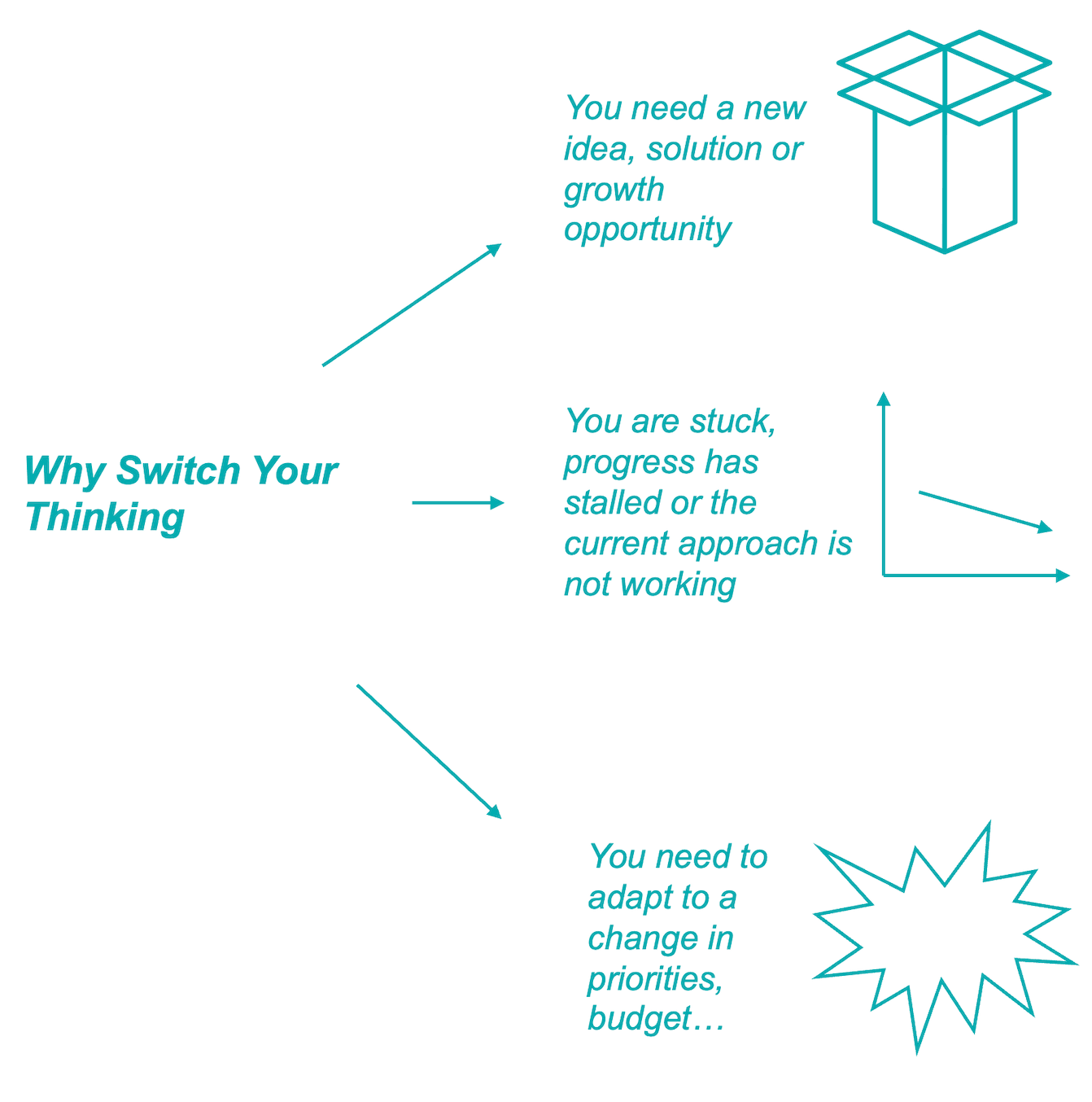Let’s start with the basics.
The idea of switching is not a new idea.
Consider these examples:
You can switch from attack to defence on the sporting field.
You could switch jobs or careers.
Or switch places and roles.
You can switch the conversation at a dinner party.
Or switch gears in a bike or car.
You can switch on and switch off.
So the idea of switching is not completely new.
The good news is that being able to switch your thinking builds on your existing capability to switch.
What is different is that I will show you how it can be applied to your thinking.
But why switch your thinking?
There are 3 main reasons:
1.To adapt to a change in a situation or environment
2.Your usual way of thinking is not working anymore
3.You want to improve or enhance your results
Let’s deal with these one at a time.
1.To adapt to a change in a situation or environment
Think of the many macro changes of the last few years. From Covid, to the rise of Generative AI to wars to political unrest.
Being open and willing to change your initial plans is a necessary way to adapt and thrive in a complex, uncertain world.
But it’s not just big changes that can call for a switch in thinking.
Have you ever been working in a project team and a team member resigns or there is a budget cut or perhaps and deadline has shortened.
Then you need to be able to switch your thinking.
- Your usual approach is not working
Your usual way of thinking is based largely on what has worked in the past. You can develop patterns of thinking that over time become habitual. These are your default ways of thinking.
These patterns are efficient but can become rigid.
For example, Law firms are having to adjust to the idea that not all of their new young, smart graduates want to become a partner. Yet their business and promotion model is based on this assumption.
Younger lawyers often are more interested in work-life balance, working overseas, travel or looking after their mental health.
The key message is this. If your usual way of thinking is not working you have to switch.
- The third reason you might want to switch your thinking is to improve or enhance your results.
In these cases your usual way of thinking might be working reasonably well.
Your customer, client or employee experience for example has been the same for the past few years.
Yet perhaps a new competitor has entered the market offering something new or different or customers are expecting more.
In these situations you will need to switch your thinking and aim to deliver a better result, experience or project.
Whatever the reason being able to switch your thinking when you need to is a super skill.
But it’s more than that. It’s about movement (i.e. switching places for example).
Being able to switch gives you a sense of freedom and security as you can always switch back to your usual approach.
It’s proactive as you do not have to wait for a random comment or an insight in the shower (although these are important).
It gives you a greater sense of agency and control (e.g. switch channels, subjects, courses, positions, roles).
Switching suggests an element of fun, risk and play (e.g. switch an outfit).
Being able to switch is a way to adapt to change and create positive change.
In short, switching is a vital, enjoyable and rewarding part of life.

